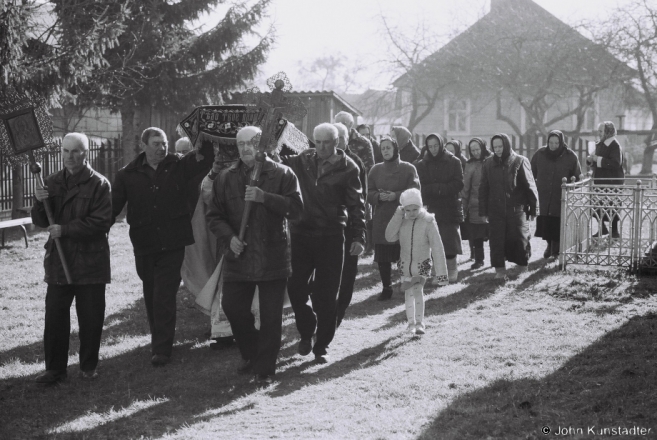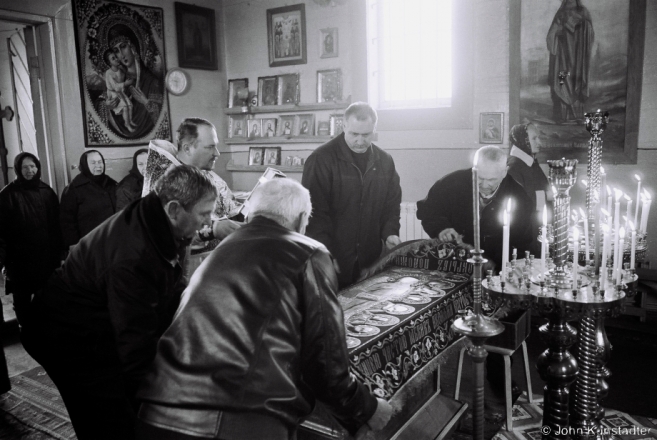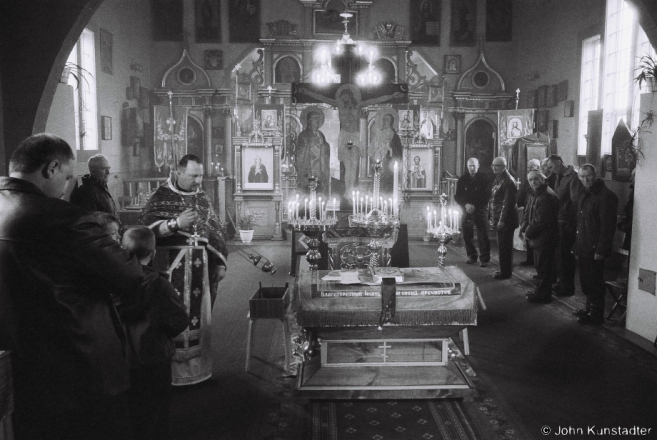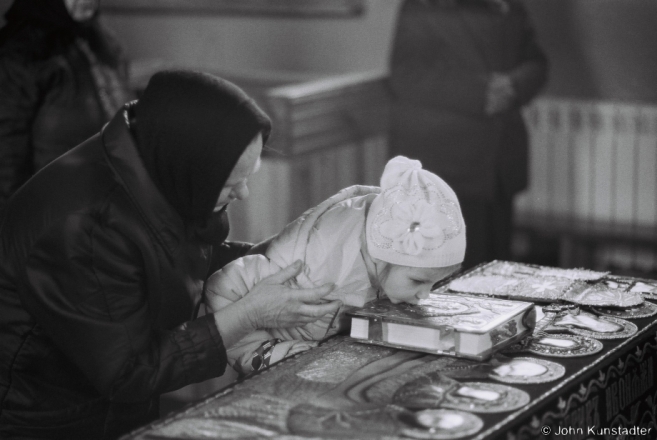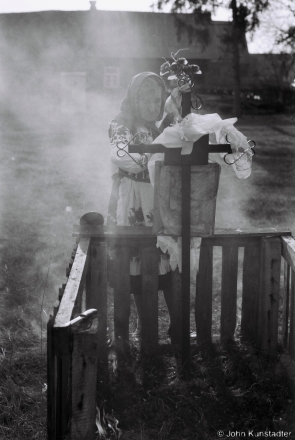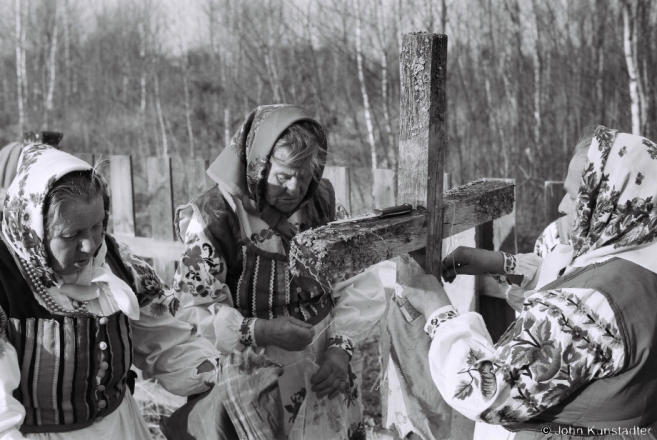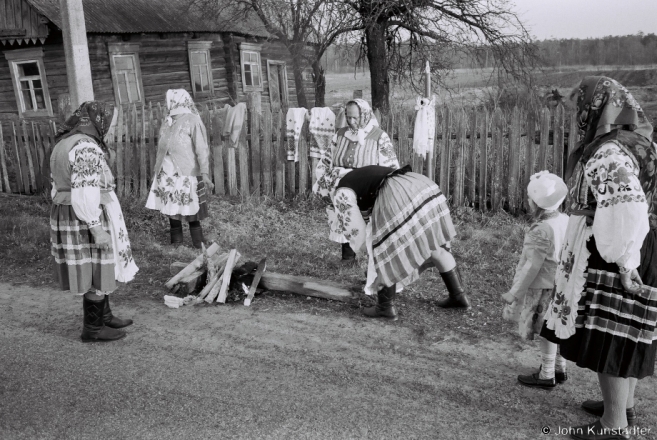Orthodox Great Saturday Matins (Lamentation at the Tomb — Plashchanitsa), Azdamichy.
To mark the death of Christ and his repose in the tomb, the priest sets up a temporary altar table in the nave to symbolize Christ’s tomb. The priest has a cloth icon spread out to cover the table. Commemorating the Lamentation of the dead Christ, the icon is called the Winding-Cloth (Plashchanitsa (Плашчаніца) in Belarusian or epitaphios in Greek). Other icons in the church are draped in black lace. However, this service itself is far from a lamentation. Rather, it praises Christ’s victory over death by his own death.
Ютрань і Вынос Плашчаніцы, Вялікая субота, Аздамічы.
Father Aljaksandr blesses the main altar and icons on the iconostasis at the beginning of the service.
As a symbol of Christ’s triumph over death, the book of the Gospels is placed on the icon of the Winding-Cloth.
Toward the end of the service, Father Aljaksandr bears the icon above his head in a procession which, by Orthodox practice, circles the church counterclockwise three times. Вынос Плашчаніцы.
After the procession, parishioners place the icon back on the temporary altar.
To end the service Father Aljaksandr renews the blessing of the Plashchanitsa (Winding-Cloth icon).
After the service parishioners kiss the book of the Gospels.
Women of the east-central Polesian village of Daniljevichy (Ljel’chytsy District) have long carried out their own specific Holy Saturday and Easter Sunday rite (see photos of the day for May 22-28, 2015). On Holy Saturday they strip the village’s roadside crosses, including the cult site known as the-girl-turned-to-stone, of the previous year’s “clothing” (runners and aprons) and burn the fabrics. On Easter Sunday morning they re-clothe the girl-turned-to-stone, make a circuit of the crosses to decorate them with new textiles, and dance and sing songs which mix the themes of resurrection/new life and fertility. This is clearly a rite with profoundly pre-Christian elements. Daniljevichy’s Orthodox church was destroyed decades ago — apparently by the Germans in World War II — and the parish priest from the next, distant, village rarely visits. Indeed, he showed up late to bless the villagers’ Easter bread on Sunday morning and hurried through the blessing. However, it was clear from the authority, dignity, and reverence for traditions of Daniljevichy’s grannies that they know very well how to maintain their faith and rites on their own.
Stripping the crosses and burning the old clothing.
One wooden cross had long been rotting (and the village had already placed a second, iron, cross next to it). During the 2015 Holy Saturday rite the wooden cross broke, and the women burned it as well. Note little Maja, who followed her great-grandmother and copied her actions with such keen pleasure and fascination that there is hope this rite will survive in succeeding generations.

